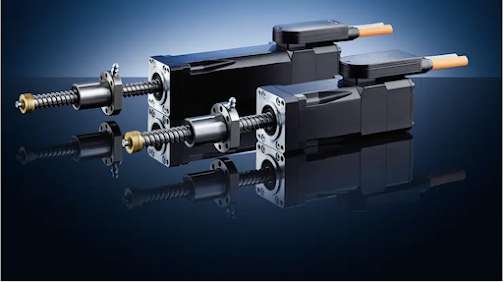Limit Switch Use In Linear Actuators
Generally speaking, a linear actuator is any device that converts electrical energy into linear motion. While hydraulic cylinders can be considered linear actuators as well, most linear actuators convert the rotational motion of an AC or DC motor into linear movement.
Regardless of the energy conversion used for activation, linear actuators do one thing really well: they move back and forth in a straight line from point A to point B with occasional stops in the middle. Today, there are hundreds of millions of actuators of all types out there in the world used to perform many different tasks. Many of those tasks are in the industrial sector where mechanical actuator devices are preferred for moving payloads in an environment subject to heavy use or abuse, or outdoor operation.
Consider just some of these applications:
- Material Handling. This includes sorting machines, feed systems, and clamps. One example is using pneumatic actuators along with conveyor belts. Limit switches provide mechanical feedback to controller on positions along the belt.
- Robotics. Obvious use of linear actuators especially where outdoor use will be harsh and frequent such as in robotic loader arms,
- Food and Beverage Manufacturing. Again the movement of food products through industrial ovens and such is often facilitated by pushing trays with linear actuators.
- Window Automation. Automated opening and closing of large windows.
- Agricultural Machinery. Tons of uses here, they give operators control for the height and angle of sprayers for thorough and consistent coverage. These same mechanisms apply to seed drills and combine harvesters. Drills require pinpoint accuracy when planting seeds, so farmers can improve land usage and minimize waste. Combine harvesters benefit from consistent functionality by integration of linear actuators in grain tank extensions, grain tank covers, and hatch doors.
- Solar Panel Operation. Ground mount Solar panel systems are exposed to the elements 24/7. With new solar tracking systems the panels are moved by linear actuators to follow the sun for maximum energy retrieval during the day.
- Cutting Equipment. Common uses for an industrial linear actuator include wood, glass, metal, and paper cutting devices. The blade can cut straight lines or jigsaw patterns, based on the actuator’s configuration.
- Valve Operation. Today’s industry would not be possible without linear valve actuators turning electric, pneumatic, and hydraulic energy into a push and pull motion, whether its opening gates on a dam, or controlling flow valves with a speed that would be impossible with human operators.
There are literally thousands more tough industrial applications for Linear Actuators. That’s where CPI Limit Switches come in.
Limit Switches in Linear Actuators

To prevent this, a set of mechanical limit switches are typically installed in linear actuators. At least two for start and stop, but depending on the application, more can be used to identify specific points in the progress of travel. A linear actuator with two limit switches implements a mechanical trigger at either end of the travel, and the trigger causes the motor to shut off at the end of its travel. The circuit below shows how a linear actuator may be connected to mechanically activated limit switches.

In the above diagram only start/stop Limit switches are used however more can be inserted along the line of travel to transmit intermediate positions to a controller. Note that CPI Maintained contact rocker switches are also available for manual start/stop of the actuator.
CPI Limit Switch Options for Linear Actuator Position Sensing

CPI’s B-Series Waterproof switches combined with one of our many stainless steel switch actuators are likely to produce an option that works for your linear actuator design without customization. Commonly used is one of our many lever mount options available in our E1 series brackets. The basic switch is pictured below but actuation style, height, and button height and electrical parameters are all specifiable to your requirements.
Pictured to the left is our E1092 simulated lever mounting configuration. The bracket is 100% stainless steel and works with any of our B series waterproof pendant switches. The basic switch is sealed in santoprene, including the lead connections for 100% waterproof operation and temperature ratings from -50F to 220F.
Typical CPI Limit Switch Electrical Specifications
- Electrical Rating (28VDC / 120VAC): 5 amps resistive, 3 amps inductive. Higher ratings available on special order. UL recognized for 120VAC/5 amp resistive rating.
- Operating temperature range: -50ªF to 221ºF, depending on configuration.
- Switch mechanism: Beryllium copper sine spring.
- Environmental resistance: Excellent resistance to both high and low temperatures, acids, alkylates, salt spray, sand, dust, and fungus.
- Electromechanical Endurance: Up to 5million cycles at 5V, <1A. See product tables for endurance ratings as a function of operating voltage and amperage
- Color: Black is standard. Other colors available
CPI Limit switches for linear actuators make the most sense when your application requires a level of robustness, reliability, and durability typically found in outdoor or industrial uses. Or if you’re just a person who insists on the best quality solution for everything you design.

Comments
Post a Comment